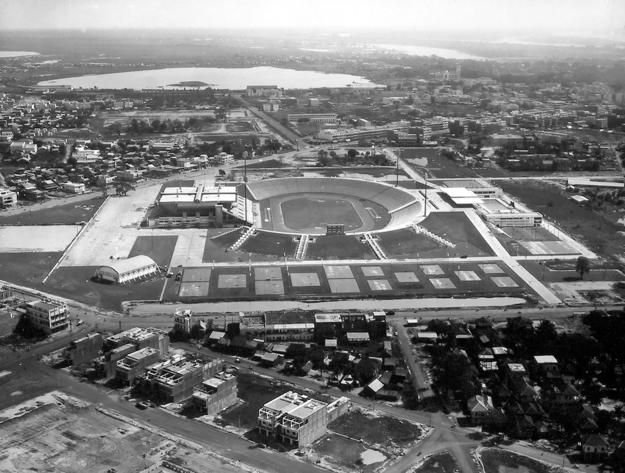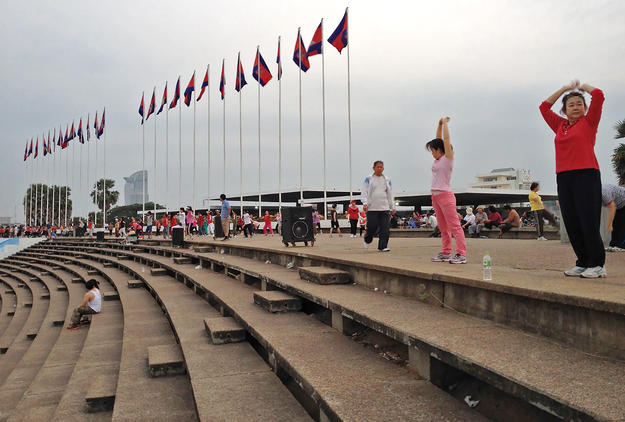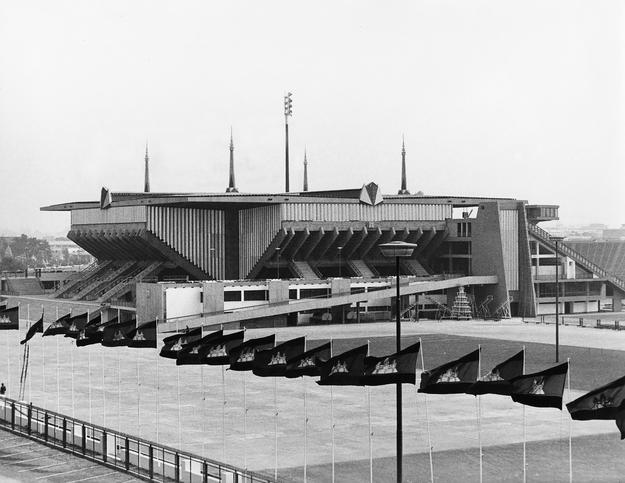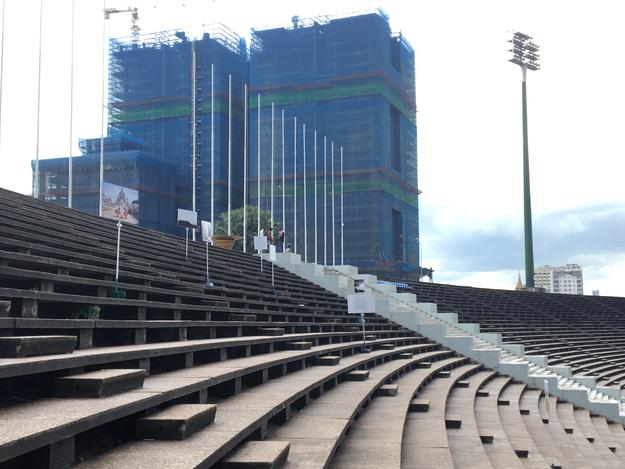National Sports Complex of Cambodia
2016 World Monuments Watch
The National Sports Complex is an iconic symbol of the massive post-independence effort that transformed Cambodia from an agrarian colony into a modern state. Construction of the complex began in 1962, and the stadium was inaugurated two years later. The buildings of this era have come to be known as “New Khmer Architecture,” a movement primarily associated with Cambodian architect Vann Molyvann (b. 1926), the designer of the National Sports Complex and the foremost architect of the period.
The design is one of the most important examples of regionally inflected modernism of the late twentieth century. Sensitive to climate, the building carefully modulates light, air, and water—ideas that were well ahead of contemporary notions of green or bioclimatic architecture. While firmly rooted in the late modern tradition, it incorporates elements of scale and spatial organization that are directly connected to work of the Angkorean era. The building bears sober testimony to the recent past, with the outbreak of civil war in the 1970s and the targeted efforts to eliminate all members of the creative, professional, and urban classes.
The National Sports Complex is one of the most important open spaces that remain in a city that is becoming inexorably denser due to rapid and unplanned development. In 2012, the northern third of the site was cleared and is now being developed into a condominium and shopping mall by private investors. Although still actively used by the citizens of Phnom Penh for recreation, there is little official interest in protecting the site as an urban asset for public use. The 2016 World Monuments Watch advocates for shifts in policy that recognize heritage as a positive component of urban development, as well as for the continued documentation, preservation, and use of the building as part of a thriving contemporary Phnom Penh.
Watch Day in 2017
Watch Day at the National Sports Complex in Phnom Penh was celebrated in June 2017 with an outdoor exhibition, “The National Sports Complex: Legacy and Vision,” organized by The Vann Molyvann Project. The exhibition celebrated the history and legacy of the sports complex as an important work of architecture and beloved public space. It featured archival research and materials from The Vann Molyvann Project, contemporary art works from Cambodian artists, and new participatory works with city residents who use the stadium.




